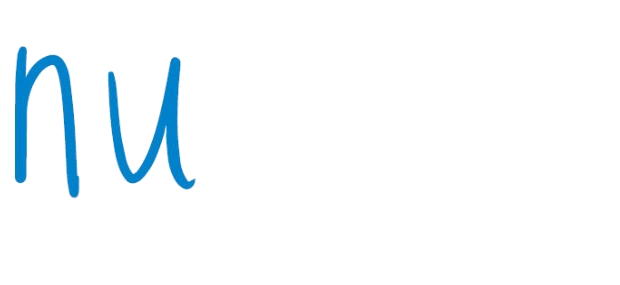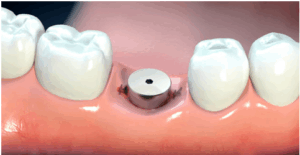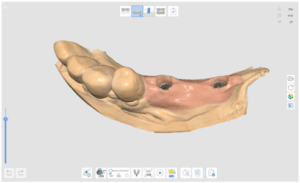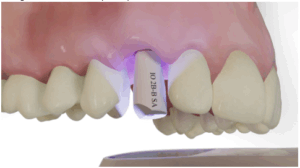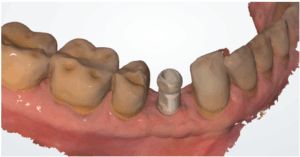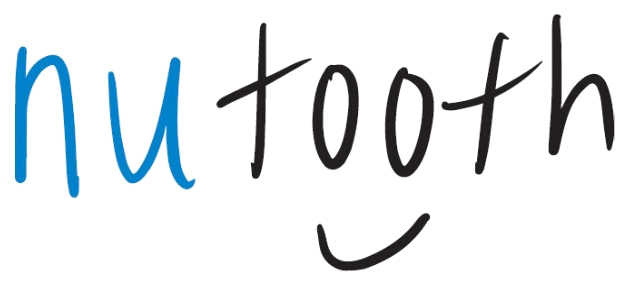Going digital for implant restorations is an exceptional way to decrease the amount of time needed to take an impression as well as increase the accuracy and fit of the abutment and restoration.
Scan bodies are made by different manufacturers, so always use the one recommended by the implant company.
Scan bodies come in different sizes and shapes and coordinate with the implant placed. Some are autoclavable and can be used up to 100 times. Others are disposable. Most are radiopaque allowing for radiographs to be taken to ensure the scan body is seated; others are radiolucent. The radiolucent scan bodies generally only seat one way and if the screw does not engage, the scan body is not seated. Zimmer Biomet scan bodies ARE the healing cap, so you can just scan that. This scan protocol is not required. Just scan upper, lower, bite and send.
The workflow for scanning an implant abutment and crown are as follows:
Scan pre prep upper, lower and bite with the healing cap on.
In the emergence profile screen, cut out the healing cap with the trim tool.
Dentists comes in, removes the healing cap and scans the emergence profile. This allows the dental technician to design the crown dependent on the emergence profile preferred by the restorative dentist for the most esthetic restoration.
Screw in the scan body ensuring two things: the bevel on the top of the scan body is facing either buccal or lingual and the scan body is fully seated.
The emergence profile is then trimmed out, in the next screen, and the scan body added to the next scan. You must ensure two things: the scan body is not distorted and the scan body is scanned fully from where the tissue meets the scan body to the top of the scan body. If not, the scan body will delete in the post processing stage as the computer cleans it up, thinking it is unwanted tissue or tongue.
Once the scan is done, remove the scan body, replace healing cap and you are done.
Tips and Tricks
If you are autoclaving scan bodies always place a dot on the scan body with an indelible marker, which will allow you to know how many times it has been autoclaved
Write the size and make on the scan body.
If you are scanning multiple scan bodies at one time, scan one at a time. Lock the previous scan and add the next scan body, so the scans do not overlap.
At Schell Dental, we can facilitate implant restorations for most implant systems available. Single unit implants are completed in 3 weeks, on average. www.schelldental.ca. However, we have a new modeless service for digital users called nutooth. nutooth allows dentists with IOS devices to receive a Straumann custom abutment and FCZ modeless crown, a Dentsply Astra Custom base and modeless FCZ crown or a Nobel Biocare Unibase abutment and modeless crown, shipped or delivered in 48 hours. www.nutooth.ca
Any questions, email [email protected] or lab chat on either website. Feel free to call the lab at 250-861-3333.
